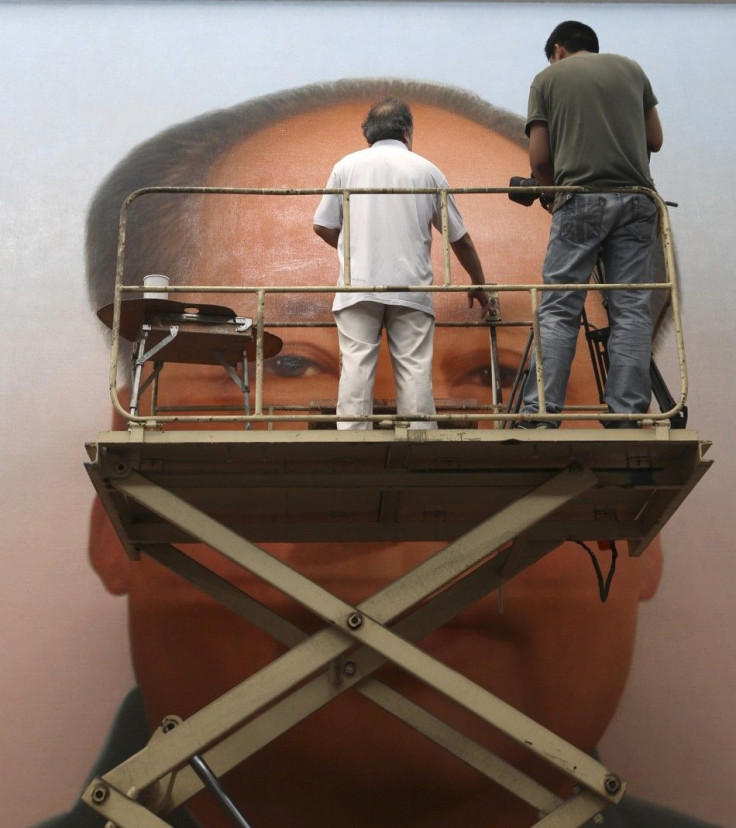Beijing's Tiananmen Square keeps Mao's spirit alive [Pictures]

Reclusive Chinese painter Ge Xiaoguang's art has gazed over one of the world's most famous city squares for decades.
For 30 years, he has painted the portraits of former paramount leader Mao Zedong that look across Beijing's Tiananmen Square.
The giant oil paintings of the Great Helmsman have kept watch from the Gate of Heavenly Peace since the Communist Party won the civil war and declared a New China on October 1, 1949.
I feel honored to have done this all these years. It is a sacred job. The sense of duty is quite strong, Ge said.
The paintings, now made of glass fibre and reinforced plastic, are six meters (20 feet) high and 4.6 meters (15 feet) wide, and weigh up to 1.5 tons.
Ge keeps a low-profile and has refused countless requests for interviews. But he gave Reuters access to his studio near the imposing Forbidden City ahead of Friday's 90th anniversary of the founding of the Chinese Communist Party.
Paintbrushes in hand and standing atop a moving platform, 58-year-old Ge gently smoothes the surface of the canvas, creating an airbrushed effect that lends the chairman a benevolent glow. The key in the portrait is to depict Chairman Mao's presence. It's really important to manage to show the charisma that he had as a great leader, he said.
Born in Beijing in 1953, Ge learned to paint the large-scale portraits from his predecessor Wang Guodong.
When Wang retired in 1976 after Mao's death, Ge formally became the fourth artist to take up the vaunted position. He now leads a team of artists that depict China's political leaders, from Mao to current president Hu Jintao.
Ge alone paints Mao. Every year since 1977, he has created a new portrait, each one slightly different, which replaces the old one during the night between September 30 and October 1, China's National Day. After decades of referring to archive material and photos, Ge says he knows Mao so well he does not need to spend much time sketching out the portrait.
Mao is still revered in China for uniting a vast country much of which had been divided up by warlords and foreign invaders.
But he is also blamed for the deaths of millions in the famine of the disastrous Great Leap Forward and the chaos of the Cultural Revolution.
The official verdict of his rule is that he was 70 percent good and 30 percent bad.
There has been a resurgence in recent years of nostalgia for the Mao era, with restaurants emblazoned in red featuring the fiery cuisine of his native Hunan, and busts and pins and other knickknacks featuring the chairman have long been popular features in tourist bazaars.
During the 1989 pro-democracy protests centered on Tiananmen Square, three demonstrators splattered Mao's portrait with paint, and later received long jail terms.
Today, the tens of thousands of people that flock to the world's largest square are greeted by Mao's imposing portrait, which currently looks directly at a huge hammer and sickle crafted from flowers for the Party's birthday. Even after 30 years of market reforms have made China the world's second biggest economy, Mao is still an official ideological centerpiece of the Party at 90. Which should keep Ge in the job for some time to come.
You must do this job right, Ge said. It is not just piece of art. It represents China's spirit and the emotions of an era.
(Editing by Michael Martina and Ben Blanchard and Jonathan Thatcher, Reuters)
© Copyright IBTimes 2024. All rights reserved.





















